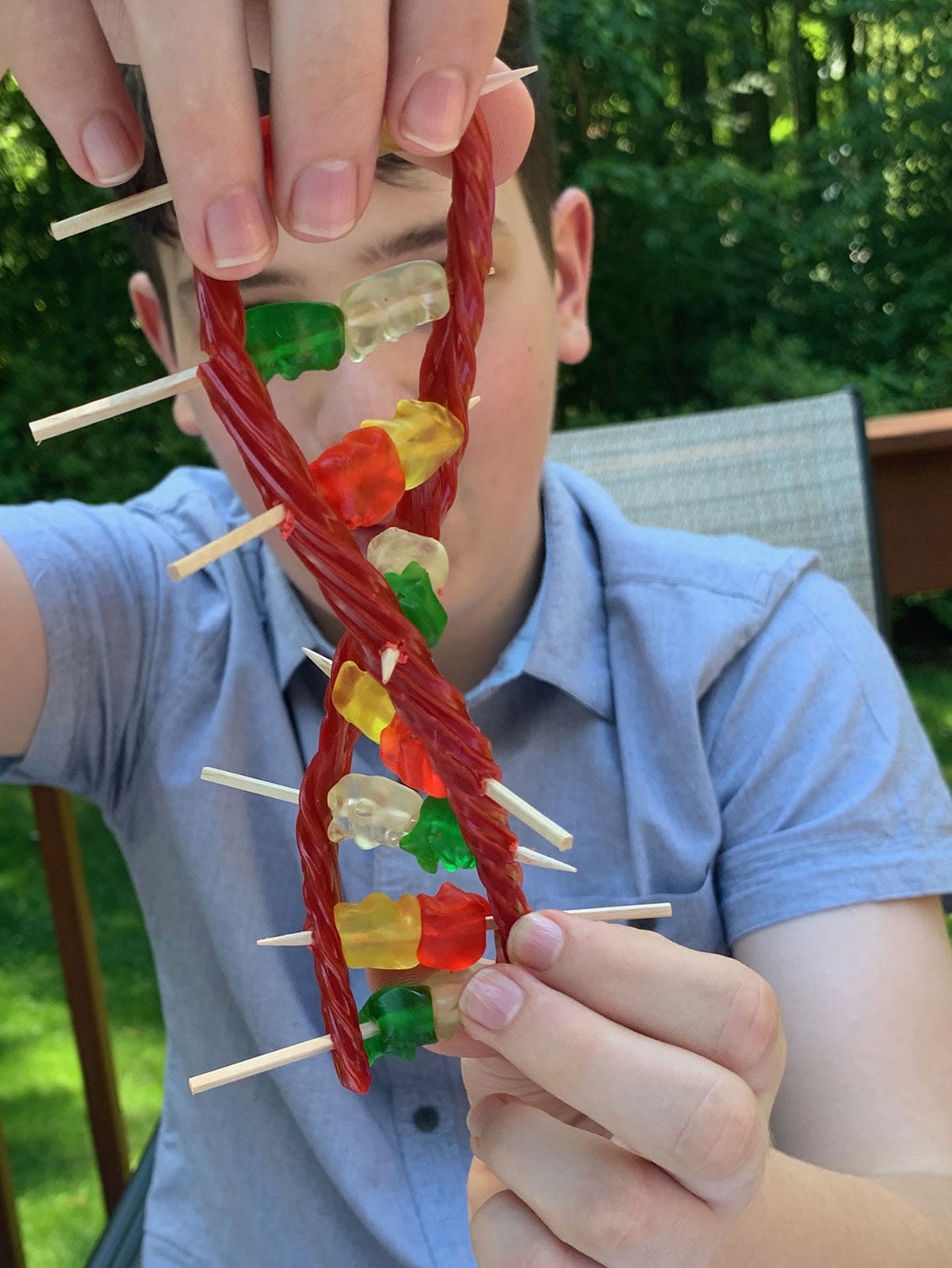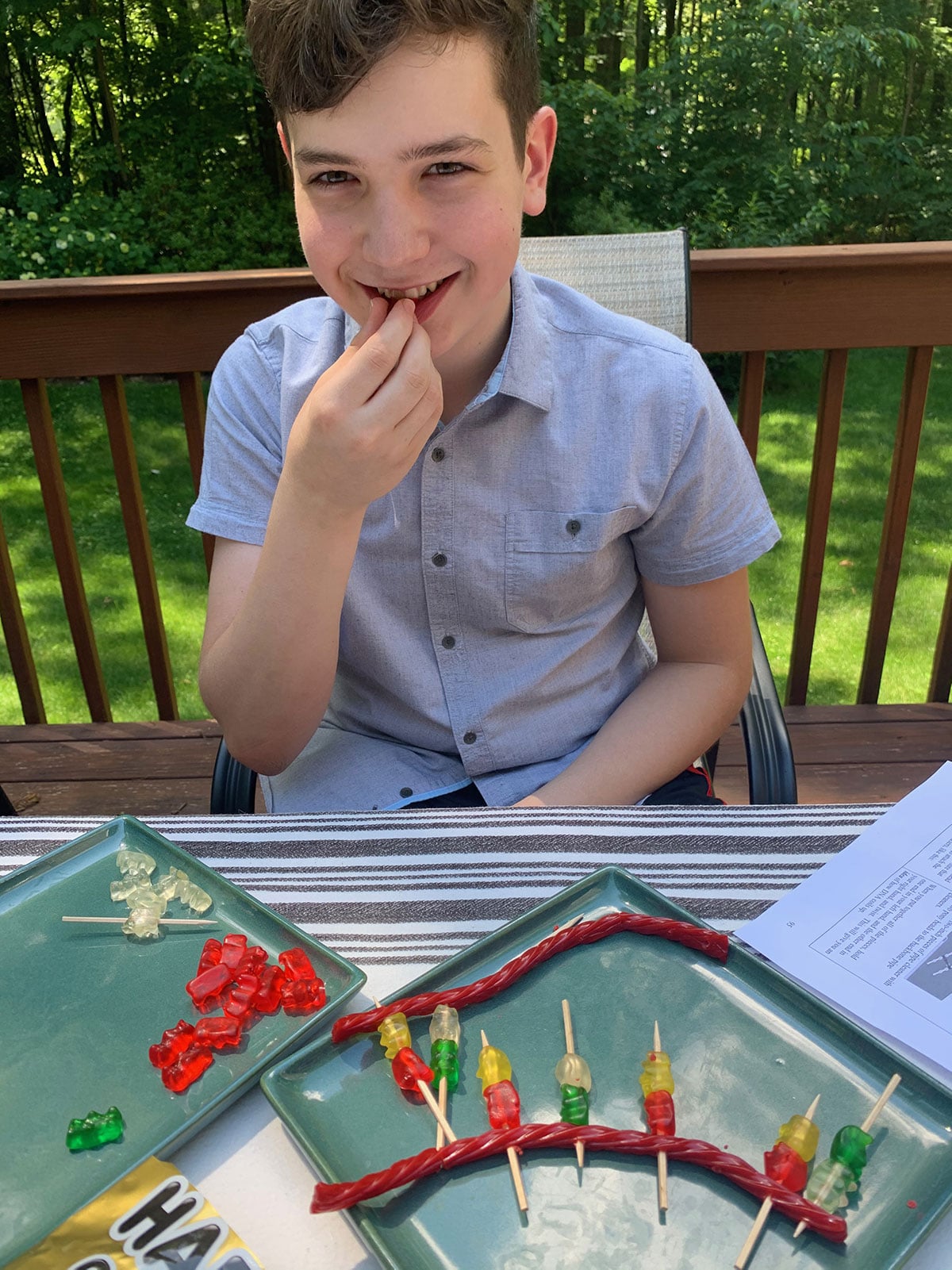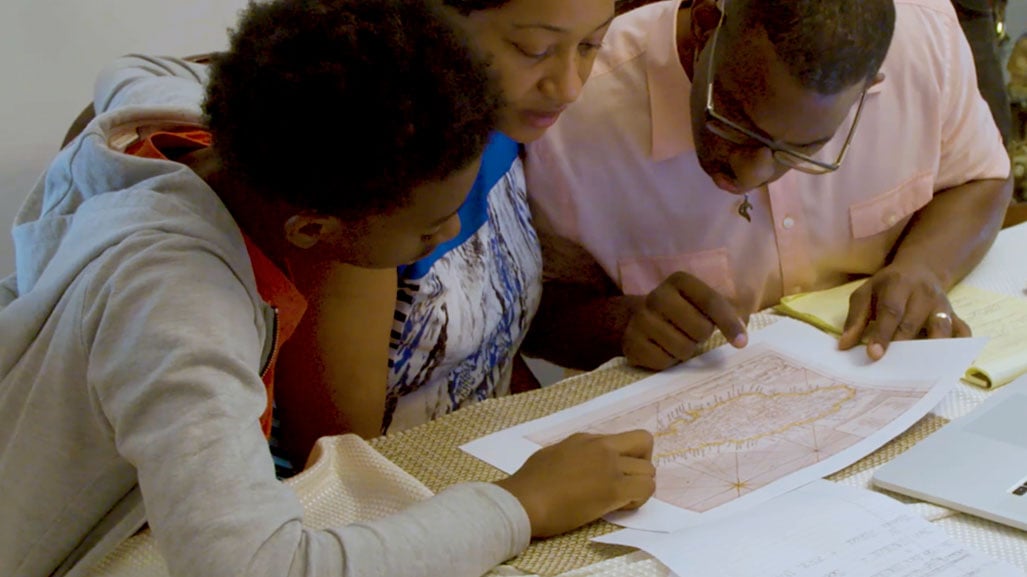Activity EightIntro to DNA & Making a Twizzler DNA Model

Activity Goal Understand the Basic Structure of DNA
Materials Needed
- A few Twizzlers
- A bag of Gummy Bears (at least four each of 4 different colors)
- A box of Toothpicks (you’ll probably need 8-10)
- Printed Twizzler DNA Model Instruction Sheet
Overview:
Let’s take a look at the basic structure (shape) and components (pieces) of a strand of DNA.
DNA is made up of four nucleobases (we’ll just call them bases). They are:
- Adenine
- Thymine
- Cytosine
- Guanine
We use the first letter of each base to represent it, so we have A, T, C, and G. Without exception (in DNA), adenine shares two bonds with thymine, and cytosine shares three bonds with guanine. They do not assemble in any other way.
A piece of DNA might be represented like this:
- T=A (the equals sign represents a double bond)
- A=T
- T=A
- C≡G
- A=T
- A=T
- G≡C
- C≡G
Both sides of the DNA have a “backbone” made up of sugar and phosphate that hold it all together, like the sides of a ladder, but flexible.
So, with the sugar and the phosphate backbone, a piece of DNA might look like this:

It doesn’t really look like that! This is a model to help you make sense of the structure of DNA.
Making a Model of DNA (that happens to be delicious)
Now that we have the gist of it, let’s build a three-dimensional model of DNA using some readily available (and edible!) materials.
The “building blocks” of DNA are:
The backbone components:
- sugar
- phosphate
And the nucleobases:
- adenine
- thymine
- cytosine
- guanine
Instructions:
- To simulate these building blocks, gather a few Twizzlers, a bag of Gummy Bears and 8-10 toothpicks.
- Use the Twizzlers to represent the backbone of the DNA. Remember, the backbone is made up of phosphate and sugar. These backbones act like the sides of a ladder holding the rungs of the ladder together and keeping them in order. Take two twirlers and lay them parallel on a table a couple of inches apart.
- Pick four different colors of gummy bears, one for each of the four bases (adenine, thymine, cytosine, and guanine). Remember that you need to have equal amounts of adenine and thymine, and equal amounts of cytosine and guanine. Do you remember why?
- Make a key (which color of gummy bear represents which base?):
- Adenine _________
- Thymine _________
- Cytosine _________
- Guanine _________
- Use a toothpick to represent the bond that holds the base pairs together. To do this, impale the gummy bears head-to-head on the toothpicks. Don’t worry, they can’t feel anything.
- Remember that adenine and thymine are always paired together, and cytosine and guanine are always paired together. The pairs can be flip-flopped side to side, but can’t be paired in any other combination.
- The gummy bears are head-to-head on the toothpick so there is enough toothpick left on each end to attach the gummy bears to the Twizzlers, like this:

- When you put together all of the pieces, hold one end of your model (which includes the ends of two twizzlers) in your left hand, and the other end of the model in your right hand, and gently twist.

- This will give you an idea of how DNA coils up. It’s not exactly an accurate model, but it’s a good, simple approximation of the structure of DNA, and how it forms into a double helix. Take some pictures of your DNA strand for posterity and get ready for the best part. . . now you can disassemble your model and eat it!

Downloads

